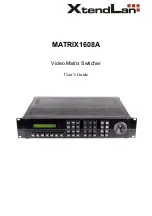
1-7
z
One network segment can only belong to one area and you must specify each OSPF interface to
belong to the specific area.
z
Both ends of a BFD session must be on the same network segment and in the same area.
z
For OSPF configuration, refer to
OSPF Configuration
in the
IP Routing Volume
.
Configuring BFD for IS-IS
Before the following configuration, configure IS-IS basic functions on each node.
Follow these steps to enable BFD on an IS-IS interface:
To do…
Use the command…
Remarks
Enter system view
system-view
—
Enter interface view
interface
interface-type
interface-number
—
Enable IS-IS on the interface
isis enable
[
process-id
]
Required
Disabled by default
Enable BFD on the IS-IS
interface
isis bfd enable
Required
Not enabled by default
For details about IS-IS, refer to
IS-IS Configuration
in the
IP Routing Volume
.
Configuring BFD for RIP
RIP periodically sends route update requests to neighbors. If no route update response for a route is
received within the specified interval, RIP considers the route unreachable. This mechanism cannot
detect link faults quickly.
After BFD is configured for RIP, when BFD detects a broken link, RIP can quickly age out the
unreachable route before the update timer expires.
RIP with BFD support provides two link detection modes:
z
Single-hop detection in BFD echo packet mode for a directly connected neighbor. In this mode, a
BFD session is established only when the neighbor has route information to send.
z
Bidirectional detection in BFD control packet mode for an indirectly connected neighbor. In this
mode, a BFD session is established only when both ends have routes to send and BFD is enabled
on the receiving interface.
Single-hop detection in BFD echo packet mode
Follow these steps to configure BFD for RIP (single-hop detection in BFD echo packet mode):
















































